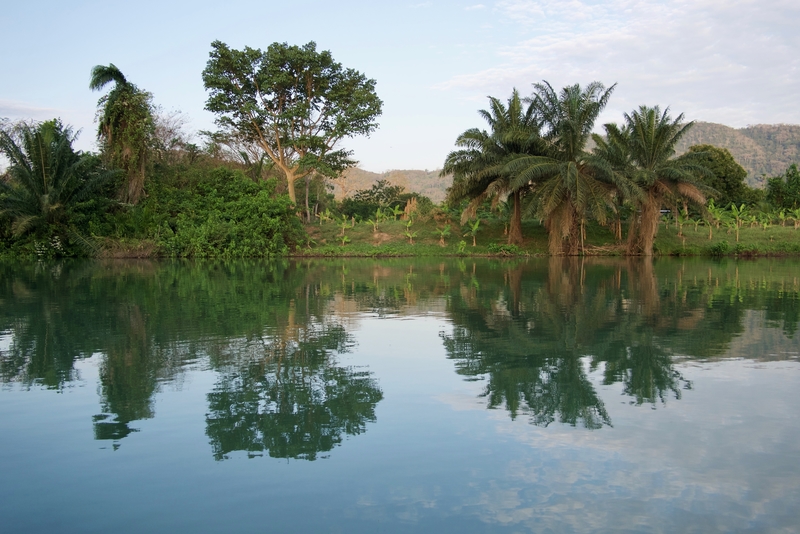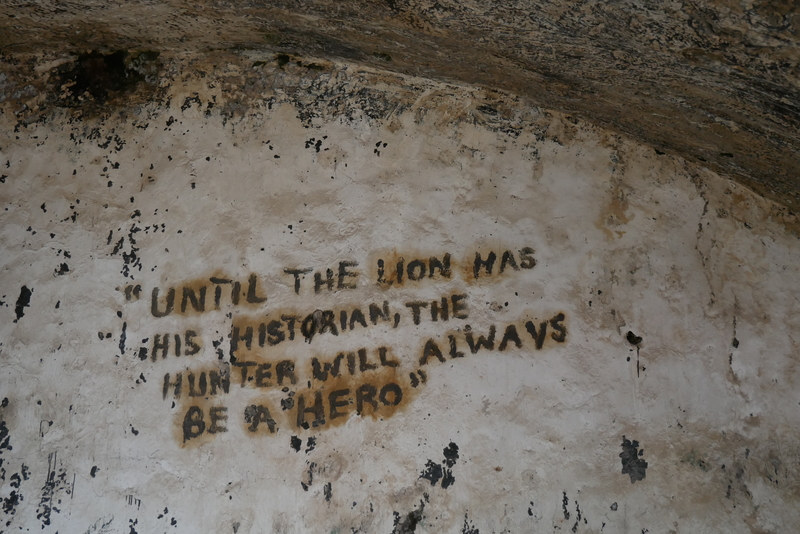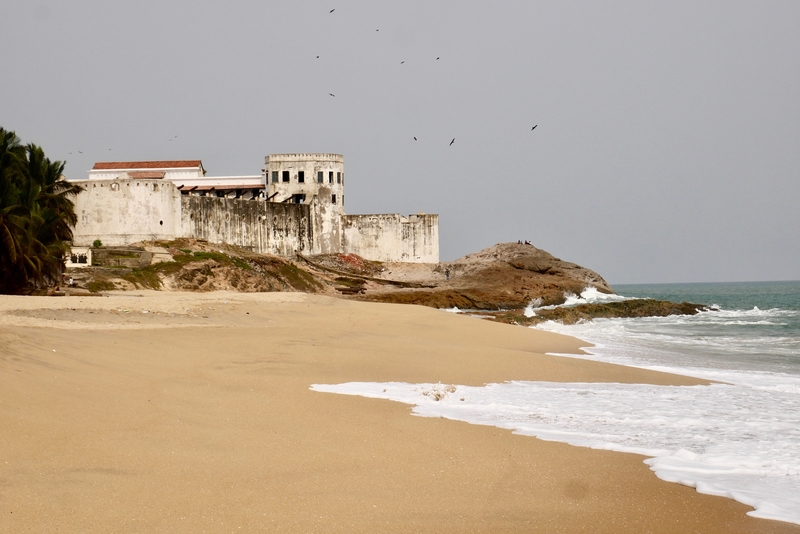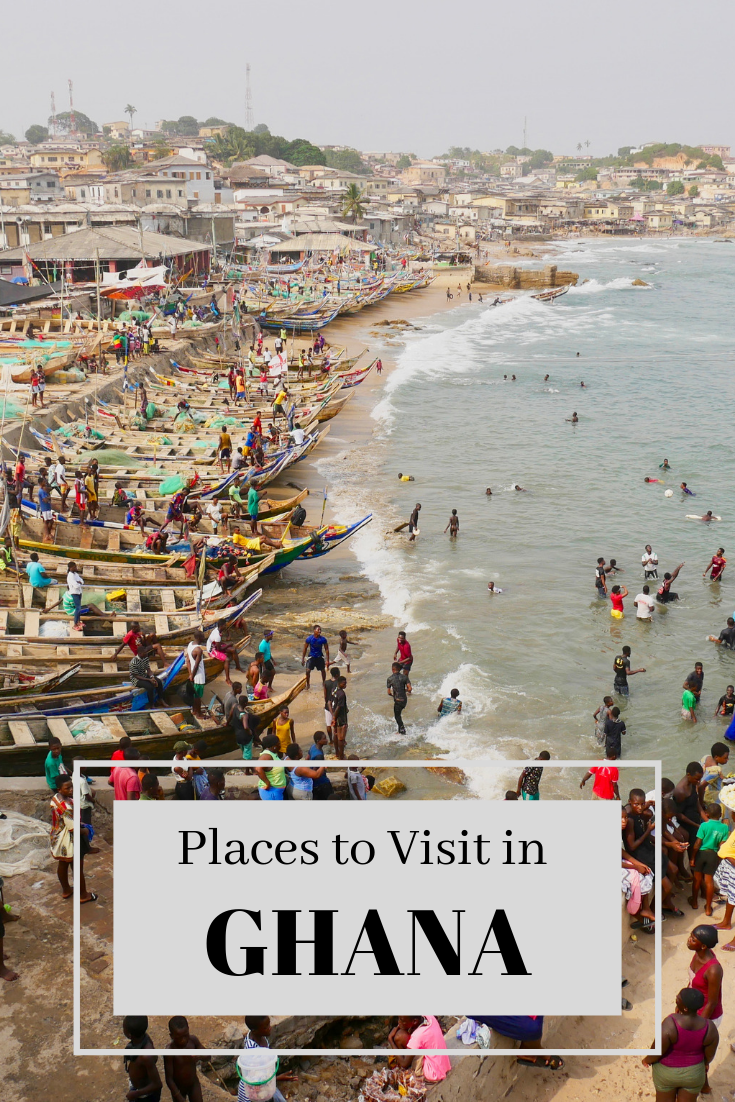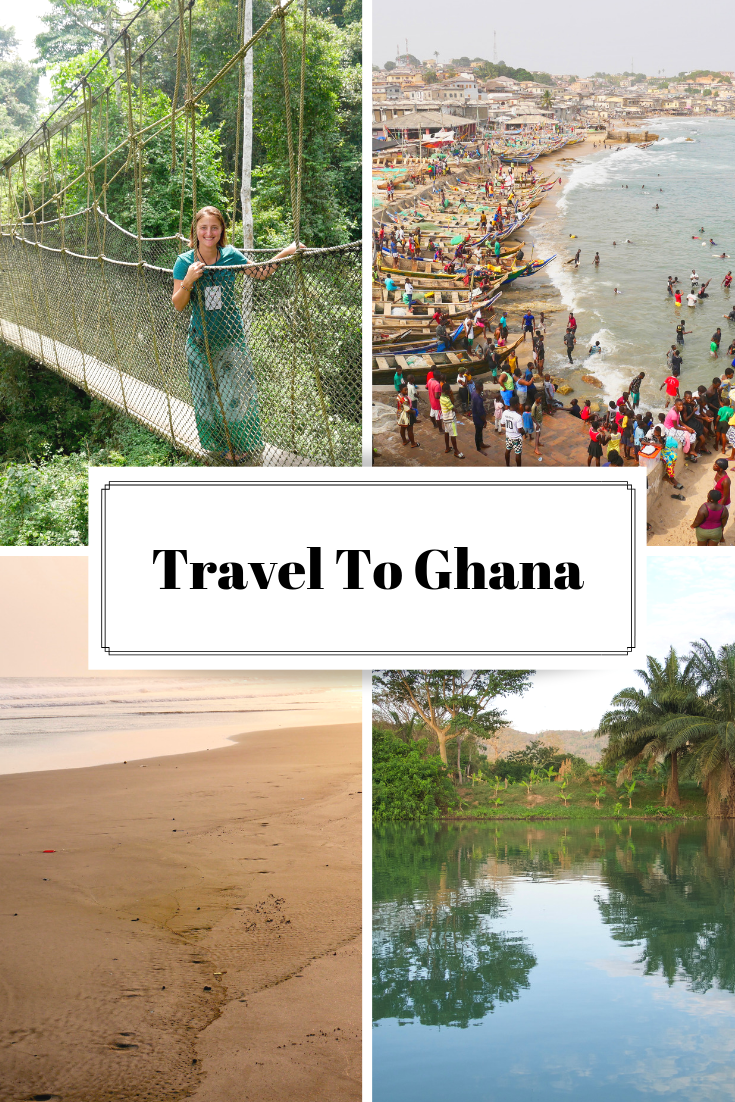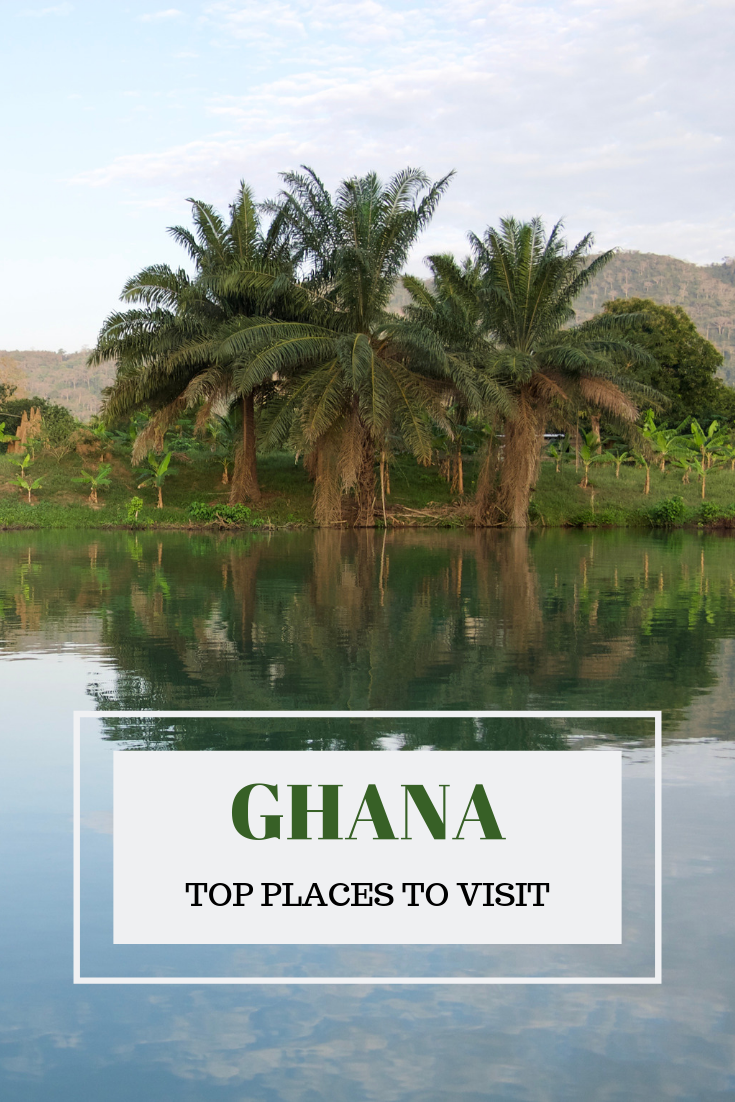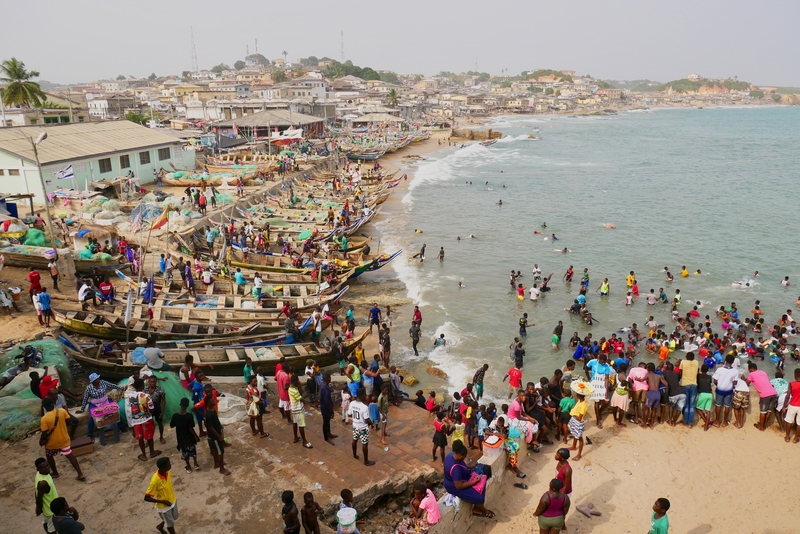
Places to Visit near Accra, Ghana
Ghana is Africa’s golden child.
Formerly known as the Gold Coast due to its vast gold deposits, the country emerged from the throes of colonialism as one of Africa’s model nations. Despite facing some of the same struggles as its West African neighbors—namely the prevalence of communicable diseases and a deep-rooted legacy of colonialism—Ghana has reached an impressive level of economic and political success in the years since its independence.
And it shows: Ghana is suffused with energy, emboldened by diversity and characterized by stability.
Ghana is often labeled ‘West Africa for beginners.’ After traveling to the country, I can easily see why. The welcoming nation allows visitors to experience the thrills of traveling to West Africa, while offering desirable comforts like air conditioning and well-stocked grocery stores.
Ghana has a number of noteworthy places to visit, too. With its gold-gilded beaches, its powerful historical monuments, its verdant hinterland, and its welcoming inhabitants, it is a place that draws people in, gets under their skin, and entices them to return.
Accra
Accra is Ghana’s capital city and the place around which the entire country revolves. An intoxicating destination that is a bit rough around the edges, the sprawling metropolis is West Africa’s gateway and the primary point of entrance for most foreign visitors.
I landed in Accra two days prior to the start of my West Africa overland tour with Dragoman. During my free days in Accra, I stayed at the lovely Agoo Hostel in the city’s Nima District. The Agoo hostel is clean, modern and offers a delicious free breakfast. It is one of the best budget accommodations in Accra and an ideal place to stay for backpackers, volunteers and long-term travelers.
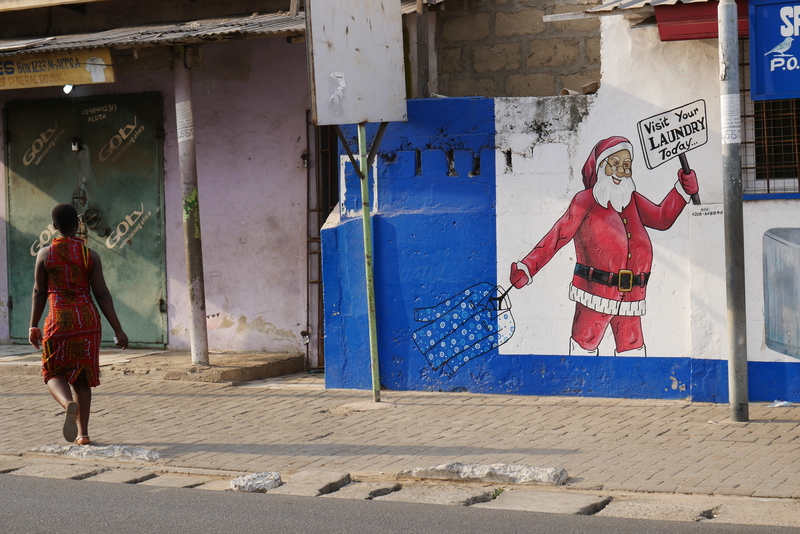
When I first got to Accra, I found the city to be nothing more than a sprawl of chaotic streets lined with derelict buildings.
Yet, three weeks later–after traveling through the remote reaches of Togo and Benin–I returned to Accra with a new set of eyes and a greater appreciation for the dynamic capital city that has been at the center of Ghana’s success.
When I returned to Accra after my three weeks on the road, I found plenty of things to do in the city. I ate hearty portions of fufu and kelewele at Buka Restaurant, shopped for fair trade handicrafts at Global Mamas and relished the sun’s rays at Labadi Beach.
Accra isn’t exactly teaming with places to visit. Aside from Jamestown, the Makola Market and the shores of Labadi Beach, the city has little to offer tourists in terms of must-see sites.
But what it lacks in attractions, it makes up for with its tantalizing food and welcoming atmosphere. Accra is pulsing, modern and host to a dizzying assortment of colors and aromas. The capital’s marketplaces are brightened by a kaleidoscope of colorful textiles. Its sticky streets are perfumed with the scent of sweat, car exhaust and salty ocean air.
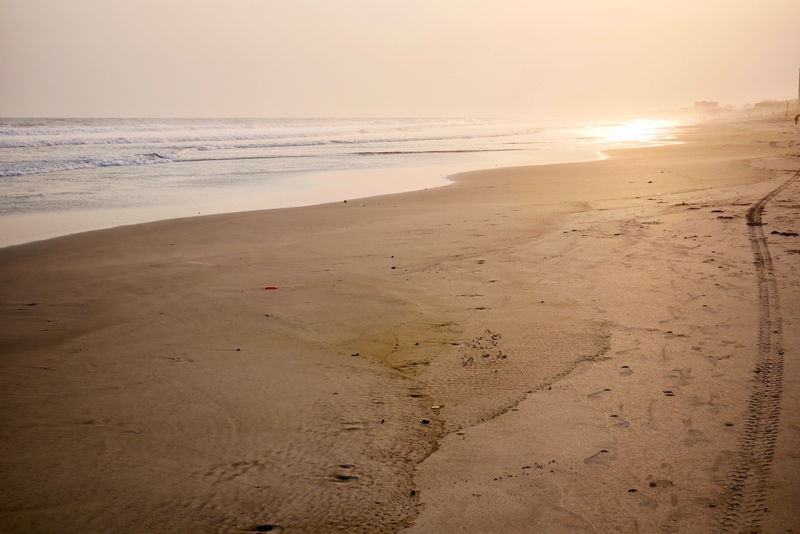
Though it may not be a top bucket list destination for most, Accra is the undeniable gateway to West Africa. It is one of the safest and most accessible cities on the continent and a fantastic launching pad for day trips into the surrounding countryside.
Places to Visit within Three Hours of Accra
Accra may be the axis around which Ghanaian culture revolves, but no trip to the country would be complete without an escape to the country’s nearby attractions.
My visit to Ghana was split into two parts: a tour of the Volta Region and Keta Beach with Dragoman and—following the end of my overland tour—an independently organized day trip to Cape Coast and the Kakum National Park.
Though my West Africa itinerary was limited due to time, I was nonetheless able to tour a handful of the most noteworthy places to visit in Ghana.
These places included the Volta Region, Cape Coast and the Kakum National Park.
The Volta Region
The Volta Region was the first stop on our West Africa tour with Dragoman. Upon securing our Togo visas and leaving the hustle and bustle of Accra, we ventured to Ghana’s verdant hill-country for two leisurely days amongst the country’s most picturesque scenery.
The Volta Region’s landscapes give way to gentle rolling hills and dense vegetation. Lush, fertile farmland carpets the hills and valleys that flank the riverbeds. It is prime hiking territory, and home to a host of budding ecotourism ventures.
On the first night of our West Africa tour, our group camped on the banks of the Volta River, at the Aylos Bay Guest House.
For two peaceful nights, we bonded around bonfires and swam under the star-studded sky.
During the day, we toured some of the area’s most notable highlights, including the Akosombo Dam and the VREL Fair Trade Banana Plantation.
- The Akosombo Dam
On our first full day in the Volta Region, we set out to tour the massive Akosombo Dam—an impressive feat of engineering that provides the majority of Ghana’s electricity needs. During our tour, we were given the opportunity to enter the massive structure and learn about the process by which water is harnessed for energy.
When the Akosombo Dam was constructed in 1960, it was the subject of widespread controversy. With the construction of the dam, the Volta River reached its tendrils across the arable hills of the Volta Region and formed a shallow body of water that blanketed 3.6% of Ghana’s total surface area. Lake Volta—a byproduct of the dam—displaced hundreds of thousands of people.
Today, Lake Volta is the largest artificially-created lake in the world in terms of surface area, and the fourth largest by volume.
- Floating the Volta River in a Pirogue
The Akosombo River runs south of Lake Volta, toward the Gulf of Guinea. On the afternoon of our Akosombo Dam tour, we took a boat trip down the Volta River in a dugout canoe.
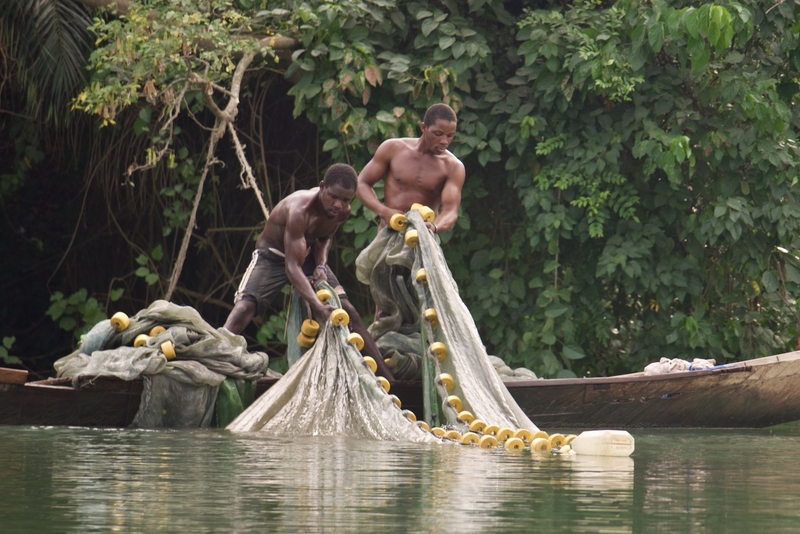
The hour-long journey took us from our campsite to the Akosombo Dam. As we glided gently down the river, we watched local life unfold. We observed fishermen as they cast their nets in the water, waved at children as the played on the riverbanks and admired the birds as they darted between the foliage.
- VREL Fair Trade Banana Plantation
On the following day, prior to crossing into Togo, we stopped by the VREL Banana Plantation. Established in 1988, VREL is a Ghanaian-Dutch joint venture that focuses on promoting fair trade between Ghana and Europe.
On our plantation tour, we were able to watch the process by which bananas are cultivated, sorted and packaged for consumers. As we walked between rows of banana plants, a guide explained the cultivation process. Around us, workers zoomed about, using elaborate pulley systems that facilitated their movements around the plantation.
Most bananas at the VREL Plantation are packaged and shipped overseas. After picking the bananas, workers sort the fruits into large vats of water. The bananas then get divided into two piles: those for the domestic market, and those suitable for export.
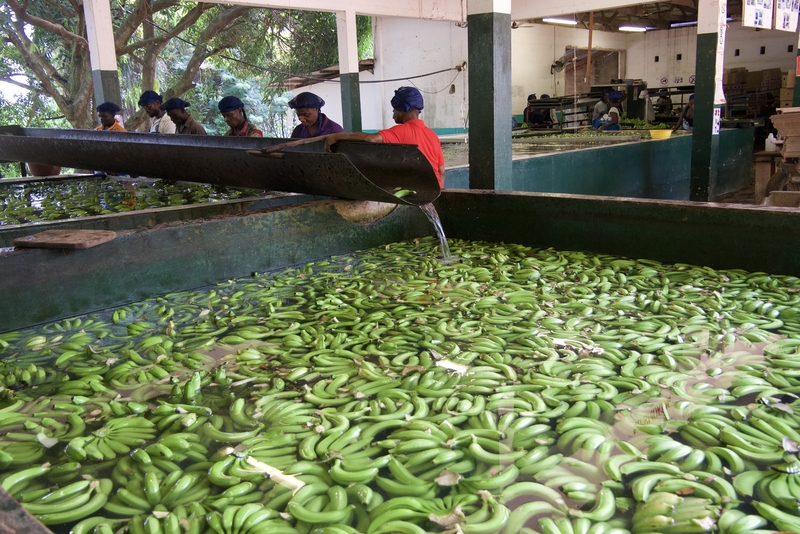
The most beautiful unblemished bananas are then packaged, transported and sold to supermarkets around the world.
The Keta Lagoon
Following a two-week detour into Togo and Benin, our Dragoman itinerary re-entered Ghana en route to Accra. On our return visit to Ghana, we had the opportunity to stop by Keta’s Fort Prizenstein—one of the lesser-known places to visit near Accra and a chilling remnant of West Africa’s slave-trading past.
Keta lies three hours east of Accra, on a narrow spit that separates the Gulf of Guinea from the Keta Lagoon. .
While we primarily stopped at Keta Beach in order to break up the journey from Togoville to Accra, our brief tour of Keta’s Fort Prinzenstein was an unexpected surprise.
- Fort Prinzenstein
Fort Prizenstein is one of 38 slave forts scattered along Ghana’s coastline. Built by the Danes in 1784, the crumbling structure was historically used as a dungeon for slaves awaiting transportation to the Caribbean.
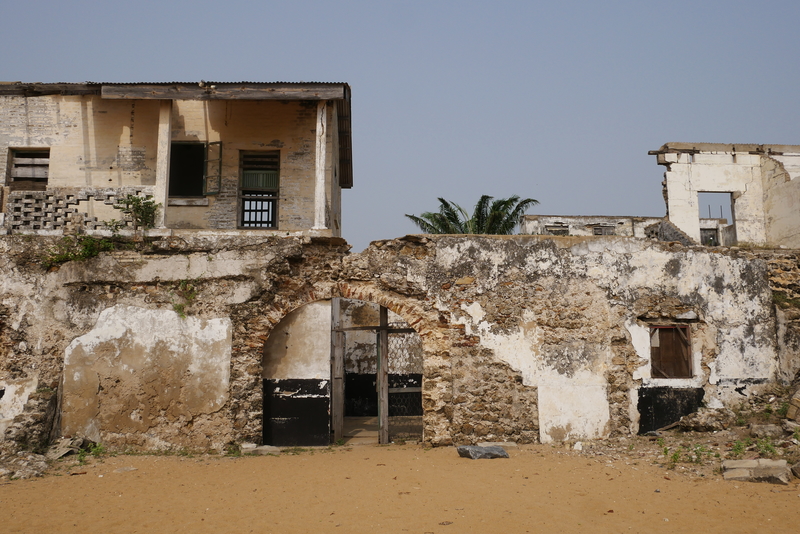
Having been weathered by the encroaching ocean, today’s Fort Prinzenstein lies largely in ruins. I imagine passersby might mistaken Fort Prinzenstein for an insignificant and derelict building along Ghana’s windswept shores.
And perhaps that is what makes this small ruined fort such a powerful place to visit. It is evocative in its solitude. Stirring in its shattered memory.
During our our visit to Fort Prinzenstein, our impassioned guide gave us a tour of the fort that moved everyone to tears.
It was haunting. A poignant reminder of humankind’s capacity for brutality.
Unlike the well-maintained slave forts of Cape Coast and Goree Island, Fort Prinzestein lies crumbling, as if forgotten by history and haunted by the ghosts of its past.
Cape Coast
Cape Coast is one of Africa’s most culturally significant spots. It is the place from which millions of slaves were uprooted from their homes, forced to sail across the Atlantic Ocean, and worked to death picking cotton and sugarcane. It is a place that forever changed the history and demographics of not only West Africa, but also of the Americas.
I visited Cape Coast and the Kakum National Park on my penultimate day in West Africa. The private excursion—organized by the Agoo Hostel in Accra—cost a total of $168, divided by myself and my two travel companions.
Cape Coast is an unmissable highlight of travel to West Africa. Not only is it one of the top places to visit in Ghana, but I wager that the sleepy coastal village contains some of the most significant monuments in all of Sub-Saharan Africa.
Cape Coast was once the largest slave-trading centre in Africa.
Today, the city is an easygoing fishing town where colonial buildings line dusty streets, peeling waves kiss golden shores, and fishermen cast nets where slave ships once set sail.
It is a pleasant town, at odds with its harrowing past.
- Cape Coast Slave Fort
The whitewashed walls of Cape Coast’s castle loom over the town’s low-lying skyline. The castle—one of the top places to see in Ghana due to its historical significance—offers a window into the torturous lives of the millions of slaves that passed through its walls.
Originally established as a Portuguese trading post in 1555, the castle changed hands a number of times before it was acquired by the British in 1664.
The Cape Coast Castle and its museum provide horrifying insight into the workings of the slave trade. For $4 per person, staff members conduct hour-long tours of the dark dungeons in which the slaves awaited their fate.
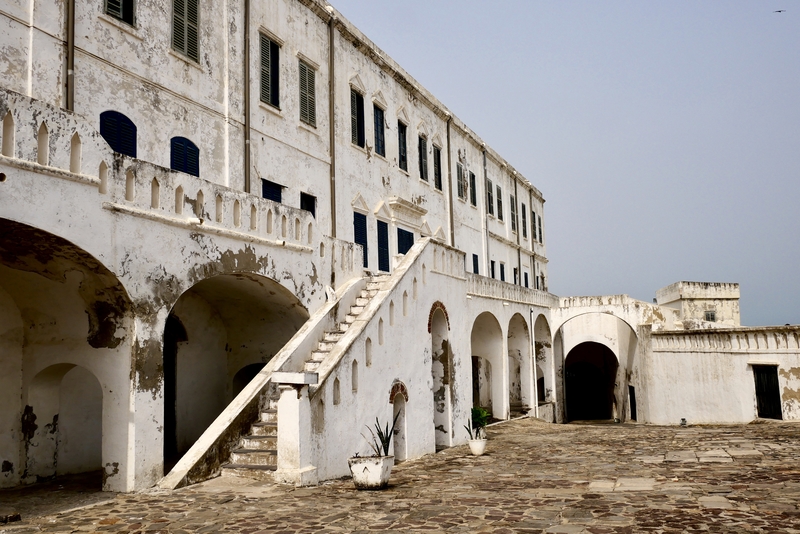
The Cape Coast Castle is a powerful place to visit. Like the Tuol Sleng Prison or Armenian Genocide Museum, it raises questions about dark tourism and the ethics of touring sites associated with the enslavement of human beings.
But Ghana’s slave history must be told. In order for history not to repeat itself, the horrors of the slave trade need to be studied and remembered.
For, as the inscription in Fort Prinzenstein stated: “until the lion has his historian, the hunter will always be a hero.”
- Elmina Castle
The nearby Elmina Castle is often included in tour itineraries of the Cape Coast area. Built in 1482, the castle is the oldest European building in Africa.
Though the Elmina Castle is one of the most significant places to visit in Ghana, I did not have time to visit the site.
However, I imagine touring the Elmina Castle would have elicited reactions similar to those I felt on my tours of Fort Prinzenstein and the Cape Coast Castle.
Kakum National Park
Our day trip to Cape Coast included a brief pitstop at the nearby Kakum National Park.
The national park is a slice of native rainforest that is famous for its rope bridges and for its diverse array of colorful birds. Seven interlocking suspension bridges swing in the canopies above the forest floor.
Nature walks across the bridges allow for up-close encounters with hundreds of bird and butterfly species.
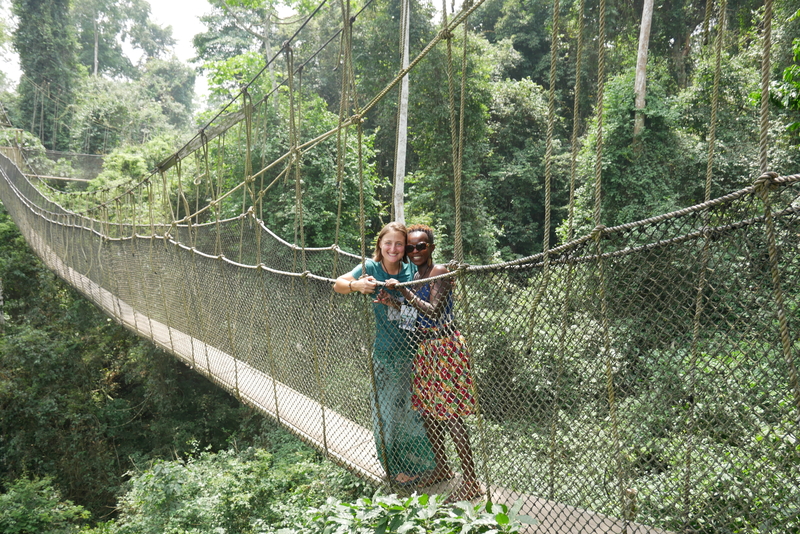
Kakum National Park’s suspension bridges are among the most notable of their kind in Africa. Though they are built from wire, rope and aluminum, the materials seamlessly blend into their environment, as if part of the forest.
The Kakum National Park is one of the most popular places to visit in Ghana. The park is easily accessible as a day trip from either Cape Coast or Accra and can be combined with tours of the Cape Coast and Elmina castles.
***
Ghana is West Africa’s greatest success story. Following its harrowing past at the hands of colonial powers, Ghana became the first African nation to gain independence. Today, it is one of the safest countries in Africa and a beacon of stability in an otherwise unpredictable region.
Ghana is welcoming and hospitable. Its diverse landscapes provide ample opportunities for recreation and animal-viewing. And its coastal forts are poignant and sobering—reminders of the dark pages in history that have played a part in defining our modern world.
Africa’s Golden Child has a story to tell.
It is up to us to listen.
_______
Like this Post? Pin it!


